Limping in poker refers to entering the pot with the minimum allowed bet. As a general PLO strategy rule, you shouldn’t enter a pot by limping in PLO in almost any scenario.
If you are new to the game you will experience a lot of players that limp, also called limpers. Limpers are especially common if you play low stakes PLO, if you play in tables where there are a lot of recreational players, or if you play in live games.
In this post we will get into what to think about and how you can adjust to play correctly against these type of players.
Realizations
Fold Equity
If you do face one or more limpers, in general you can expect to have very little fold equity.
Players who limp like to see flops. They want to see as many flops as possible because their strategy is just to play a pot as cheaply as possible, and by limping they don’t have to invest that much money. They really want to see a flop and try to hit something.
If they face a raise they don’t particularly care about the additional money that they have to invest. It’s still more expensive than only limping but they are still calling 99 out of 100 times. It’s simply the way these players perceive the game and how they play
In this clip, JNandez analyzes a hand against a limper and talks about taking fold equity and stack sizes into consideration.
Multiway Pots
If you raise it up after your opponent limps, it is very likely that there will be people behind you who will get into the pot as well by calling. Very often you will end up in a multiway pot.
This is especially true if you raise from middle position or cutoff and there are more like 3 or 4 people behind you that can still come in.
Of course, if you do play against people who like to limp a lot and see flops cheaply it’s very likely that you are up against a recreational player. Keep in mind that doesn’t necessarily mean that either you have fold equity preflop or that you will just play a pot only against one opponent.
Rake
Rake is something else that is very important in these scenarios and is especially is true in low stakes games, where the rake is relatively high. Because you have little fold equity, if you raise, your opponent is almost always going to make the call, and maybe even other players will join.
This means you are going to see a flop almost all the time, and you’ll have to pay rake.
Basically we’re not gonna gather some of the net winnings because rake will have an impact. If there’s a possibility for you to not have to pay rake, think of having fold equity preflop.
Adjusting Your Strategy
Play Tighter
If you are guaranteed to pay rake, it’s going to have an impact on your net earnings and how much you can win, so you have to adjust and become tighter.
You want to have a tighter raising range than you would normally do from a given situation.
Generally you don’t want to raise as many hands as when you don’t have a limp. If there are players folding to you, you still have the chance to just take down the pot preflop by raising and without having to pay rake and move on.
Raise Full Pot
If you decide to raise against a limper, raise it up to full pot. You’re going to punish your opponents as much as possible because they have to invest more money, and therefore they’re making a much larger mistake than if you raise small.
You could also raise small, as there are some strategic concepts and ideas that could apply, but for simplification and to maximize your opponents mistakes, raise it up to full pot.
Read Your Opponents
If you decide to raise, think about who is sitting behind you. If there are more regular players sitting behind you and you raise it up, it might be more successful for you to come through, because they are not going call as much in those positions.
They could, of course, sometimes come over the top with a 3-bet.
It’s always good to get yourself familiar with the idea of looking around the table. What is the tendency of a recreational player? What is the tendency of regular?
Try to to think ahead and then adjust correctly.
Position
Position is always beneficial in the majority of poker games, but especially in Pot Limit Omaha.
Raising from the button might be more beneficial or more profitable than if you raise from middle position or the cutoff. You will end up less often in a multiway pot because there are less people left behind you to act.
Additionally, you’re going to be in position guaranteed post flop which is always helpful.
In the following clip, JNandez reviews another hand with a limper and talks about including position and reads into your decision making process.
Conclusion
In PLO, there’s no one-size-fits-all strategy for every situation.
When there is a limper at the table, don’t limp behind them, realize that if you limp you are definitely going to pay rake.
In a limp scenario you have little to no fold equity, if you raise you are almost always going to see a pot, so make sure you play a tighter range.
If you do want to enter the pot, raise full pot preflop, let them make the mistake, and stop doing it yourself.
If you want to learn more about facing limpers or if you want to talk strategy with people playing in these games, make sure to check out our advanced course, videos & solvers.
We have specific episodes for this topic and a big community of players who play low, mid, and high stakes who can definitely help you out if you are playing in these games and if you still have open questions.



























